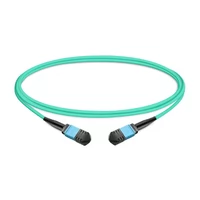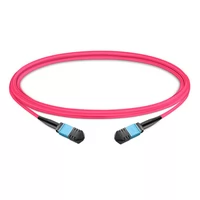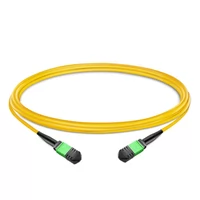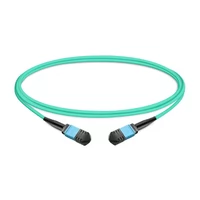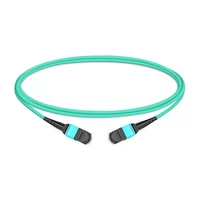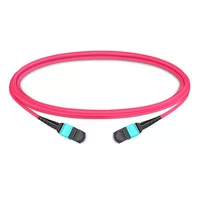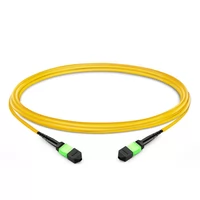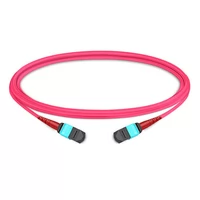In the rapidly evolving field of communications, fiber optic patch cables play a crucial role in data transmission. However, many people may misjudge the selection between MPO and MTP fiber optic patch cables.
MPO and MTP connectors are widely used in various high-density and high-bandwidth fiber optic network applications. Here are some common uses for these connectors:
Data Centers: They are extensively used for facilitating high-speed data transfer within data centers, especially for backbone cabling and interconnects.
Telecommunications: These connectors support the infrastructure of telecommunications networks, including optical transceivers, switches, and routers.
High-Density Cabling: MPO and MTP connectors are ideal for high-density cabling networks, providing better network capacity and flexibility.
Structured Cabling: They are used in structured cabling systems for creating organized and scalable cabling infrastructures.
Networking: Corporate networking infrastructure often utilizes these connectors for their capacity to handle high-speed data transfer.
Broadband Networks: Increasingly, MPO and MTP connectors are being adopted in residential broadband networks for their efficiency in data transmission.
These connectors are particularly beneficial in environments where space is at a premium and where rapid deployment and scalability are required. Their design allows for quick and efficient connections, making them a top choice for modern network applications that demand high performance and reliability.
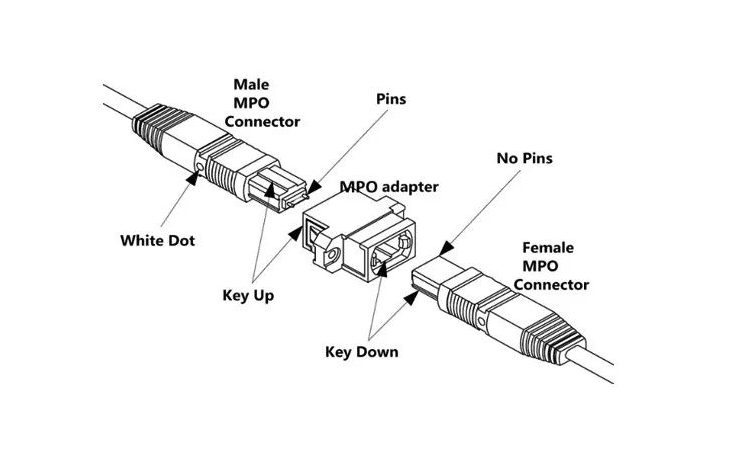
MPO (Multi-Fiber Push-On) is a type of multi-fiber optic connector, while MTP (Multi-Termination Push-On) is an improved version of the MPO connector. Although they may appear similar in appearance, there are significant differences in some key aspects.
One important distinction is the connection method. MPO fiber optic patch cables typically use a threaded connection, requiring the connector to be rotated to complete the connection. In contrast, MTP fiber optic patch cables employ a push-pull connection, which is a more convenient and faster design, eliminating the need for rotation and significantly improving installation and maintenance efficiency.
Furthermore, MPO and MTP fiber optic patch cables differ in their mating durability. MTP connectors are specially designed to have a higher mating cycle, meaning they can withstand more frequent connection and disconnection operations, making them more durable. Comparatively, MPO connectors may have a relatively lower mating cycle.
In terms of compatibility, MPO and MTP also exhibit some differences. Although they are both multi-fiber optic connectors, different devices and systems may have specific requirements for the connector type. Therefore, when selecting fiber optic patch cables, it is crucial to ensure compatibility with the equipment and systems being used to avoid connection issues or performance degradation.
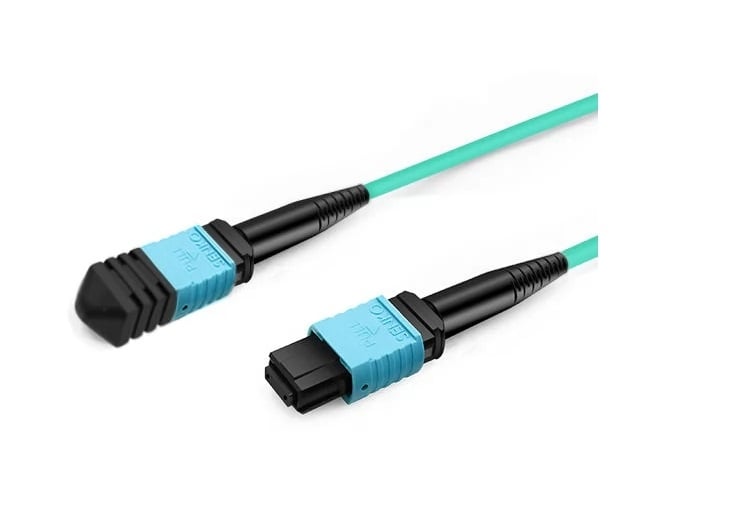
Another factor to consider is the performance of the fiber optic patch cables. MTP fiber optic patch cables generally have better optical performance, such as lower insertion loss and higher return loss. This means that in long-distance transmission and high-bandwidth applications, MTP fiber optic patch cables can provide more reliable data transmission, reducing signal attenuation and reflection, and ensuring system stability and performance optimization.
Of course, price is also a factor to consider when selecting fiber optic patch cables. Generally, MTP fiber optic patch cables may be relatively more expensive due to their improved design and performance. However, investing in MTP fiber optic patch cables may be worthwhile in some critical applications with high-performance requirements, as they can provide superior connection quality and reliability.
In summary, MPO and MTP fiber optic patch cables differ significantly in terms of connection method, mating durability, compatibility, and performance. Understanding these differences is crucial for choosing and effectively using fiber optic patch cables. When selecting, consider the specific application requirements, equipment compatibility, and budget to make a comprehensive decision. Avoid misjudgment, and choosing the appropriate fiber optic patch cables will ensure your communication system has efficient, stable, and reliable data transmission capabilities.
Related Products:
-
 1m (3ft) 12 Fibers Female to Female MPO Trunk Cable Polarity B LSZH OM3 50/125 Multimode Fiber
$20.00
1m (3ft) 12 Fibers Female to Female MPO Trunk Cable Polarity B LSZH OM3 50/125 Multimode Fiber
$20.00
-
 1m (3ft) 12 Fibers Female to Female MPO Trunk Cable Polarity B LSZH Multimode OM4 50/125
$21.00
1m (3ft) 12 Fibers Female to Female MPO Trunk Cable Polarity B LSZH Multimode OM4 50/125
$21.00
-
 1m (3ft) 12 Fibers Female to Female MPO Trunk Cable Polarity B LSZH OS2 9/125 Single Mode
$26.00
1m (3ft) 12 Fibers Female to Female MPO Trunk Cable Polarity B LSZH OS2 9/125 Single Mode
$26.00
-
 1m (3ft) 12 Fibers Low Insertion Loss Female to Female MPO Trunk Cable Polarity B LSZH OM3 50/125 Multimode Fiber
$32.00
1m (3ft) 12 Fibers Low Insertion Loss Female to Female MPO Trunk Cable Polarity B LSZH OM3 50/125 Multimode Fiber
$32.00
-
 1m (3ft) 12 Fibers Female to Female Elite MTP Trunk Cable Polarity B LSZH OM3 50/125 Multimode Fiber
$35.00
1m (3ft) 12 Fibers Female to Female Elite MTP Trunk Cable Polarity B LSZH OM3 50/125 Multimode Fiber
$35.00
-
 1m (3ft) 12 Fibers Female to Female Elite MTP Trunk Cable Polarity B LSZH Multimode OM4 50/125
$36.00
1m (3ft) 12 Fibers Female to Female Elite MTP Trunk Cable Polarity B LSZH Multimode OM4 50/125
$36.00
-
 1m (3ft) 12 Fibers Female to Female Elite MTP Trunk Cable Polarity B Plenum (OFNP) OS2 9/125 Single Mode
$42.00
1m (3ft) 12 Fibers Female to Female Elite MTP Trunk Cable Polarity B Plenum (OFNP) OS2 9/125 Single Mode
$42.00
-
 1m (3ft) 24 Fibers Female to Female Elite MTP Trunk Cable Polarity A Plenum (OFNP) Multimode OM4 50/125 for 100GBASE-SR10 Connectivity
$63.00
1m (3ft) 24 Fibers Female to Female Elite MTP Trunk Cable Polarity A Plenum (OFNP) Multimode OM4 50/125 for 100GBASE-SR10 Connectivity
$63.00

